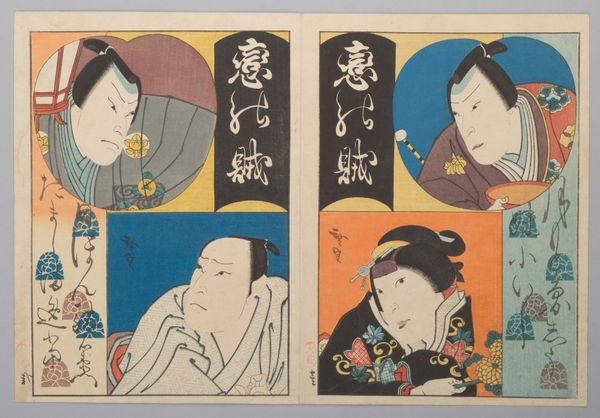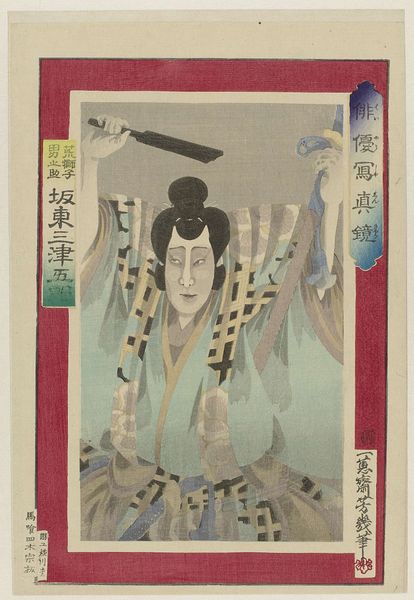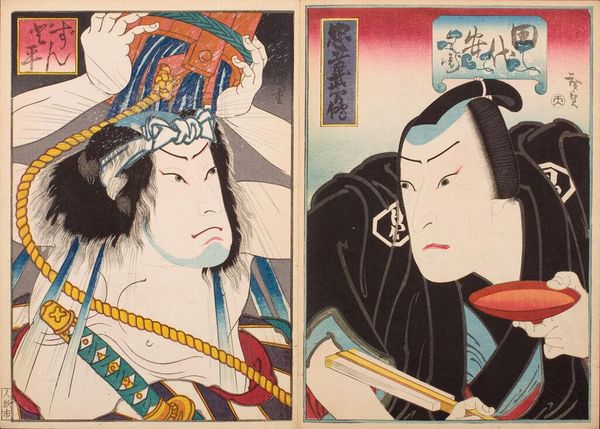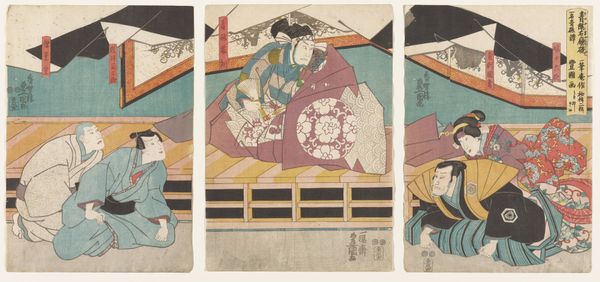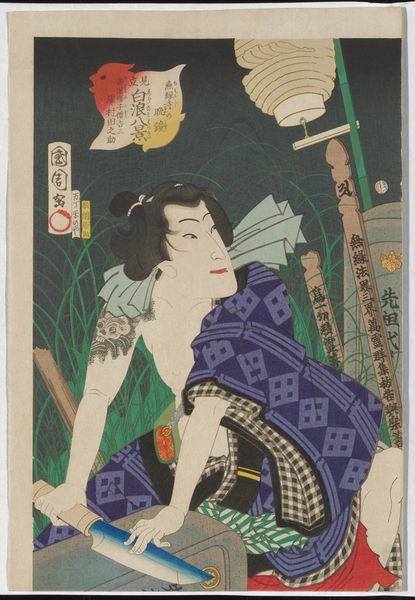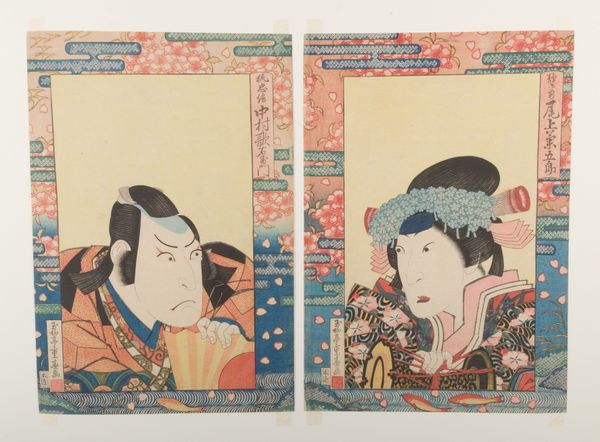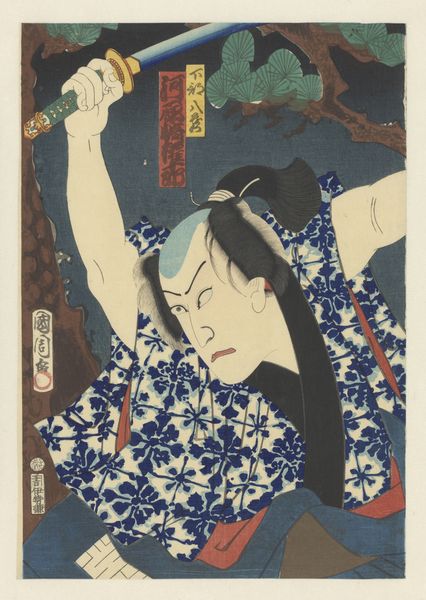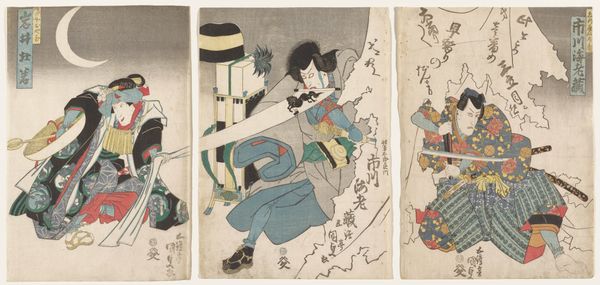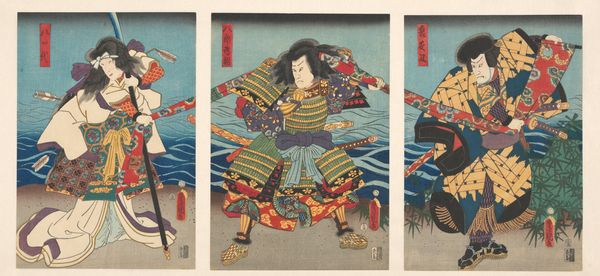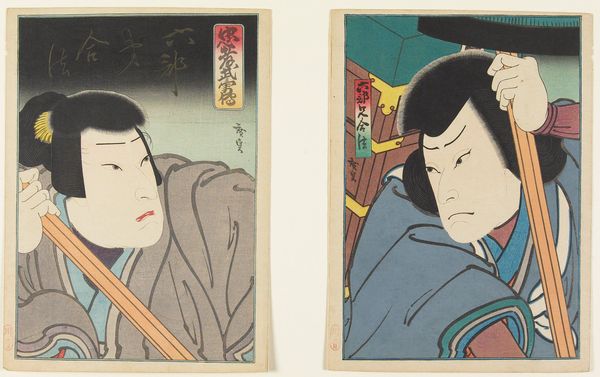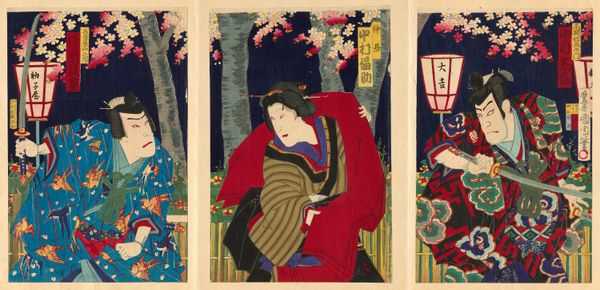
The Actors Mimasu Daigorō IV as Umako Daijin (right), Ichikawa Ebizō V as Umaya Daijin (center), and Jitsukawa Ensaburō as Prince Shōtoku (left) 1849
0:00
0:00
print, textile, woodblock-print
#
portrait
# print
#
asian-art
#
textile
#
ukiyo-e
#
japan
#
figuration
#
woodblock-print
#
genre-painting
Dimensions: Image (each): 9 7/8 × 20 1/8 in. (25.1 × 51.1 cm)
Copyright: Public Domain
This triptych was created by Gosōtei Hirosada in Osaka, Japan, and employs woodblock printing techniques on paper. The artwork presents three figures set against radiating lines. The composition is structured to emphasize the individual character of each actor. Note how each figure is framed within its own panel, but the backgrounds visually connect them. The lines converge towards a vanishing point above and behind the central figure. This draws the eye upwards, accentuating the dramatic expressions and costumes. The actors embody culturally recognizable roles within the Kabuki tradition. Yet, Hirosada destabilizes fixed meanings by presenting each figure with a contemporary twist. It’s an interplay of tradition and innovation. The semiotic system of colors, patterns, and theatrical makeup acts as a complex visual language to convey layers of narrative information. Finally, consider the subtle interplay between the lines of the background and the actors’ poses. This is not merely decorative. It suggests a dynamic relationship between performance and societal structure. It raises questions about how identity is constructed and perceived within a theatrical context.
Comments
No comments
Be the first to comment and join the conversation on the ultimate creative platform.
